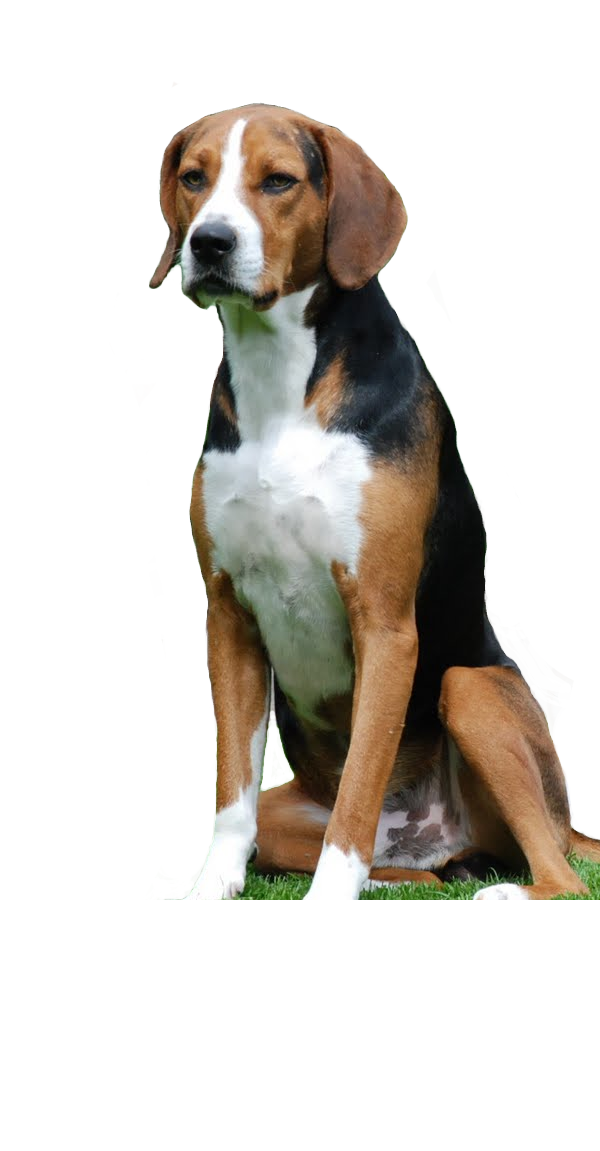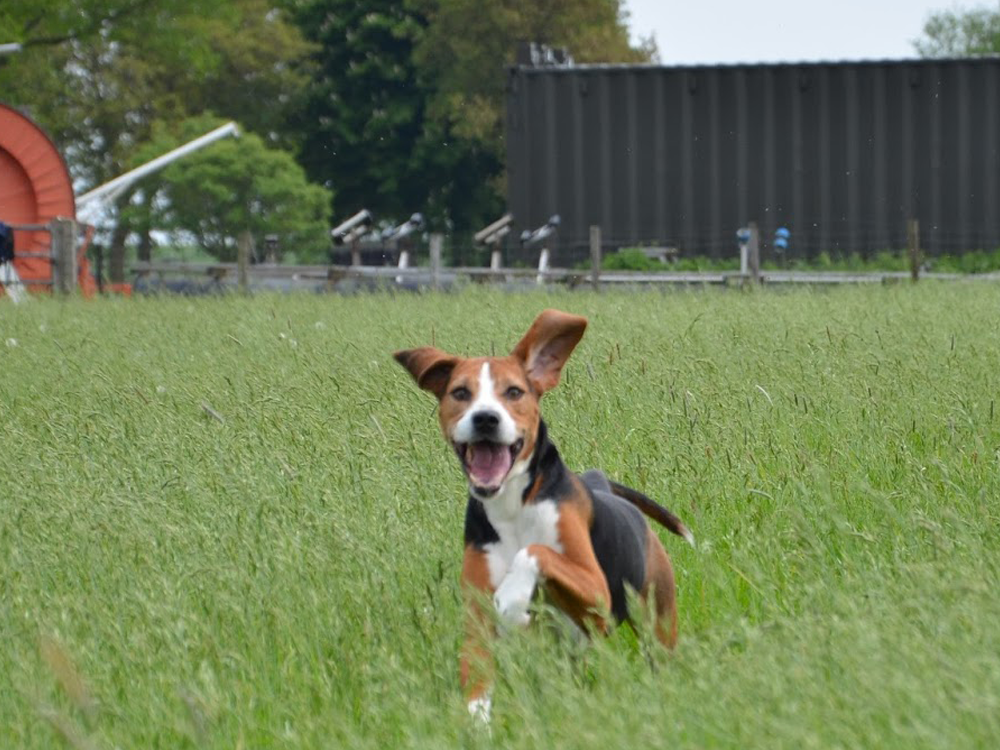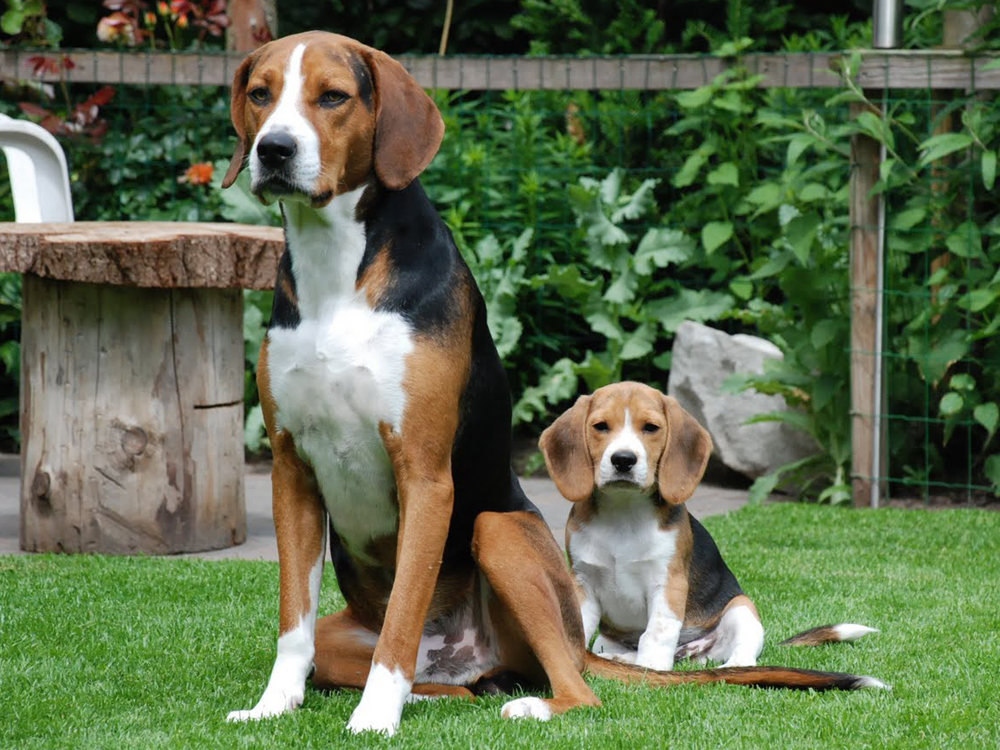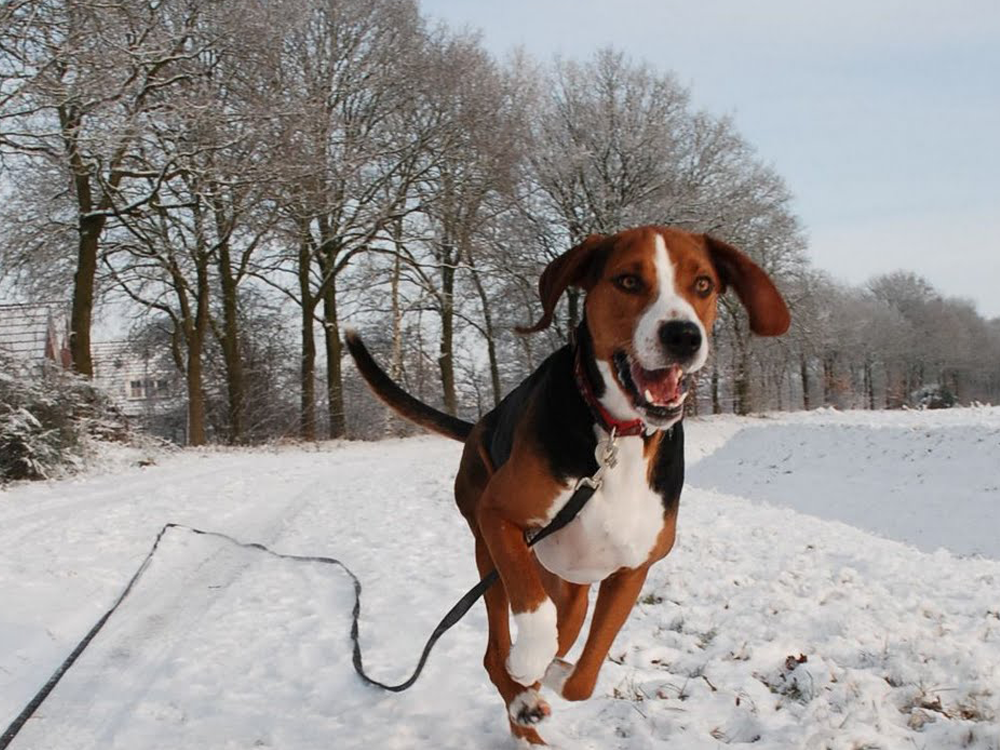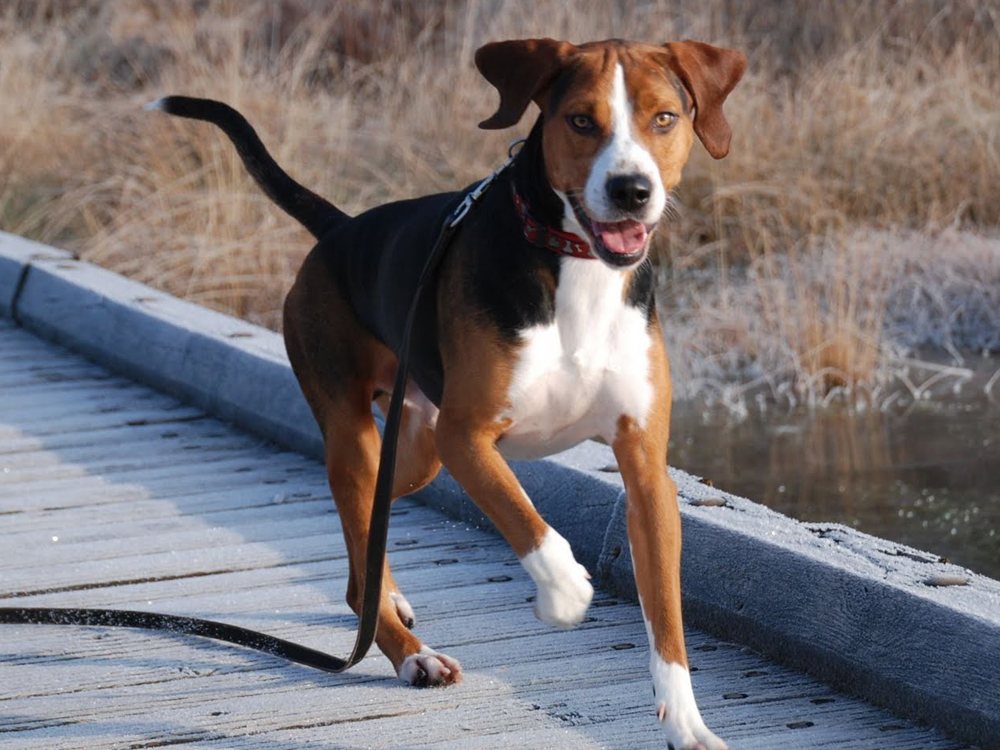
Hamiltonstovare Breed Pictures
Vital Breed Stats
| Height: | 50 - 60 cm M | 46 - 57 cm F |
| Weight: | 23 - 27 kg M | 23 - 27 kg F |
| Breed Group: | Toy Dog Group |
| Life Expectancy: | 10 - 13 years |
| KC Registered: | No |
Breed Characteristics
| Size: |  |
| Grooming: |  |
| Exercise Level: |  |
| Trainability: |  |
| Barking Level: |  |
| Good with Children: |  |
| Good with other pets: |  |
| Affectionate: |  |
| Protective: |  |
| Cost to Keep: |  |
Give a thumbs up if you love the Hamiltonstovare

0
More About the Breed
History
The origin of the Hamiltonstovare can be traced back to the 19th century Sweden. This dog breed was developed by Count Adolf Patrick Hamilton, founder of the Swedish Kennel Club. This hound dog was originally called "Swedish Hound" until it was renamed in 1921 to honour Hamilton as its foremost breed advocate and breeder.
Its ancestry is believed to include the English Foxhound, Harrier, Holsteiner Hound, Curland Hound and the Heiderbracke. The Hamiltonstovare was bred to hunt fox and hare on difficult terrain and in harsh weather and as such excels in flushing and tracking live game.
In 1886, the Hamiltonstovare became the most popular hound in the country. Today, this dog breed is still not as popular outside of Sweden and so is considered a rare breed, although it is slowly making a name for itself in the UK as both a companion and a show dog.
Appearance
Weighing 50 to 60 pounds and standing 40 to 60 centimetres at the withers, the Hamiltonstovare is a large and sturdy dog breed. It has a slightly longish, rectangular head, broad skull and well-defined but not overly emphasised stop and relatively long and rectangular muzzles. It has clear and dark coloured eyes with a calm and intelligent expression. It has ears that are drop down and set quite high, slightly above its eyes. Its nose is black, well-developed, and almost parallel to the line of the skull. It has full lips and wide nostrils.
This Hamiltonstovare boasts of a beautiful two-layer glossy short coat comprised of a short and soft undercoat that is especially thick during winter, and a weather-resistant topcoat that lies close to its body. The dog breed comes in colours of black mantle, rich gold, and rusty red tan, that come with symmetrical white markings.
Grooming
Temperament
Intelligence
It is also important to provide this dog mentally and physically stimulating activities since it can pick up bad habits out of boredom such as digging and chewing. Since it is bred to follow directions as a hunting companion, the Hamiltonstovare is not a hard breed to train. The key to its successful training is positive reinforcement in the form of treats and praises. Early socialisation also plays a big part in making sure it grows up to be a well-adjusted, calm and confident dog.
The Hamiltonstovare is patient and gentle with children. However, it can also be slightly boisterous and as such should not be left unattended with toddlers as its size can easily topple over small kids. Other dogs are not an issue with the Hamiltonstovare since it can get on well with them, but smaller animals such as cats and rabbits will appear as prey to this dog, especially if it has not been socialised or they were not raised together.
Nutrition
- Senior and less active: up to 1,250 calories daily
- Typical adults: up to 1,400 calories daily
- Physically active/working dogs: up to 1,565 calories daily
Feeding
Health
Exercise
Cost of Ownership
When raising a dog much too often, people do not understand the huge responsibility in the financial aspect. Buying a dog like a Hamiltonstovare and feeding it twice a day will not equate to responsible dog ownership, as it entails more money-wise. For instance, you may be able to buy a Hamiltonstovare puppy for over £500 to £950, but you must also consider getting a pet insurance so you have a safety net in the event it gets suddenly sick or gets into an accident. Pet insurance for that matter will cost around £60 to £100 a month.
Let us say you have already prepared to spend £40 to £50 a month to buy quality dog food formulated for large breeds such as the Hamiltonstovare, but are you financially ready to make sure it is healthy and not suffering from any health problems? Veterinary costs for this breed will set you back at least £1,200 a year. This will include regular veterinary check-up and procedures such as vaccination and boosters.
On average, a Hamiltonstovare will cost you £100 to £170 month on month. It is also worth repeating that the Hamiltonstovare is a rare breed and as such only a few puppies are bred and registered yearly, which means you have to be patient to get one as you will be put on a waitlist.
Is a Hamiltonstovare Right for You?
- The Hamiltonstovare is both an excellent hunting dog and family companion.
- This breed is affectionate and forms strong bonds with its family.
- It is protective and will bark to alert, which makes it a great watchdog.
- If left to its own devices, they can be destructive.
- It only requires at least two hours of daily exercise.
- It has low grooming needs as it has a short coat that sheds minimally.
